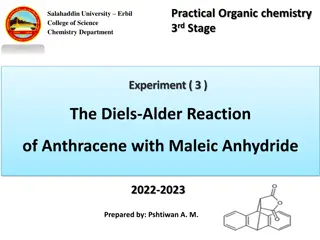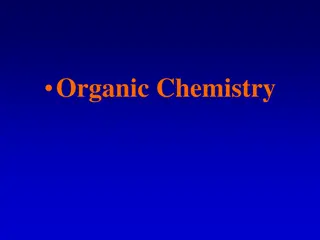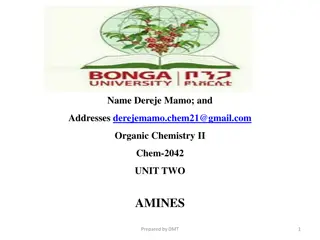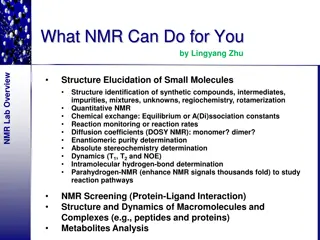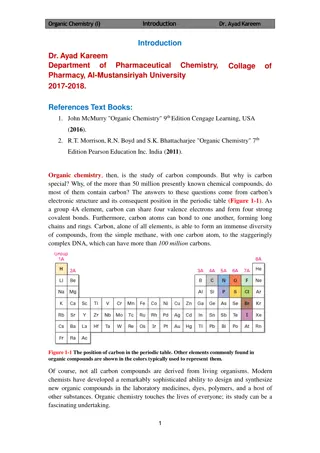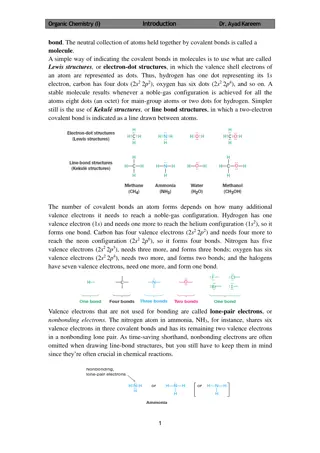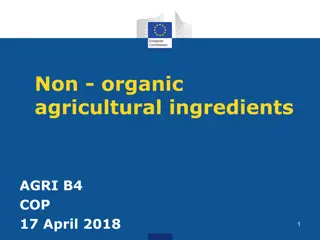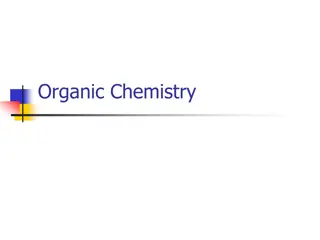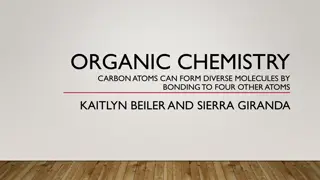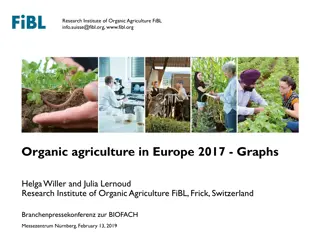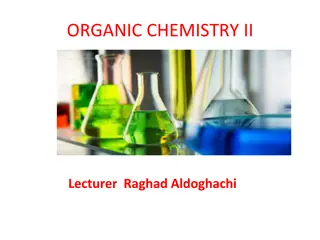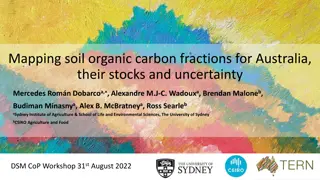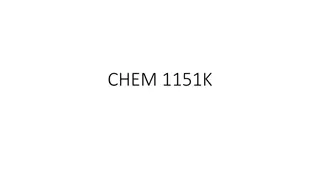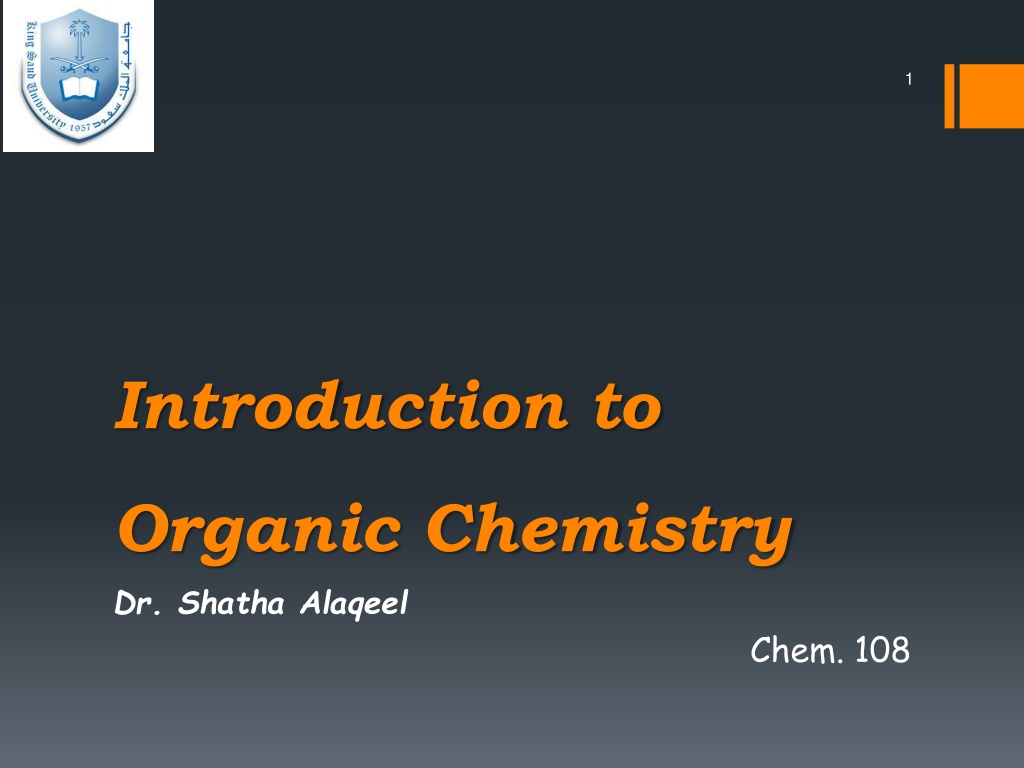
Understanding Organic Chemistry Fundamentals
Explore the basics of organic chemistry in this introductory lecture by Dr. Shatha Alaqeel. Learn about the nature of organic compounds, types of chemical bonds, and the significance of organic chemistry in various fields such as biology, energy, and materials science.
Download Presentation

Please find below an Image/Link to download the presentation.
The content on the website is provided AS IS for your information and personal use only. It may not be sold, licensed, or shared on other websites without obtaining consent from the author. If you encounter any issues during the download, it is possible that the publisher has removed the file from their server.
You are allowed to download the files provided on this website for personal or commercial use, subject to the condition that they are used lawfully. All files are the property of their respective owners.
The content on the website is provided AS IS for your information and personal use only. It may not be sold, licensed, or shared on other websites without obtaining consent from the author.
E N D
Presentation Transcript
1 Introduction to Organic Chemistry Dr. Shatha Alaqeel Chem. 108
2 Leaning objectives: By the end of this lecture the student will know: What is Organic Chemistry? How are organic compounds are made from indiviual elements? Types of bond in organic compounds and their significance Different methods of representing chemical bonding
3 What is organic chemistry? Organic chemistry is the study of carbons / hydrogen containing compounds and their derivatives (containing other elements such as O, X and N). organic chemistry also is the study of the chemistry of life.
4 Importance of organic compounds DNA: the giant molecules that contain all the genetic information for a given species. proteins: blood, muscle, and skin. Enzymes: catalyze the reactions that occur in our bodies. Petroleum: furnish the energy that sustains life. Polymers: Cloths, cars, plastic. Medicine
5 Chemical Bonds The attractive force which holds together the constituent particles (atoms, ions or molecules) in chemical species is known as chemical bond. Each bond is made up of two electrons The electrons that participate in chemical bonds are the valence electrons, which are the electrons found in an atom's outermost shell.
Review of Valence Electrons Number of valence electrons of a main (A) group atom = Group number
7 Chemical Bonding 1. Ionic Bonds 2. Covalent Bonds 3. Coordinate Covalent Bonds
8 Ionic bond Ionic compounds are formed when one atom gains a valence electron from a different atom, forming a negative ion (anion) and a positive ion (cation) respectively. The electrostatic force of attraction between oppositely charged ions constitutes the ionic bond. Therefore ionic bonds are usually between metals and nonmetals ; opposite ends of the periodic table. When two atoms with large different electronegativity values
9 Sodium lets Chlorine use its valance electron
The type of bond can usually be calculated by finding the difference in electronegativity of the two atoms that are going together.
11 Covalent Bond results when two or more atoms have similar electronegativities, lend to form bond by sharing electron pairs rather than completely transferring electrons. A covalent bond is formed when two atoms share one or more electron pairs. Covalent bonds form between two non-metal atoms.
12 Covalent Bonds: 1. single or multiple A covalent bond in which one electron pair is shared by two at oms, represented in chemical formulas by one line or two vertical dots, as C H or C:H. A double covalent bond is where two pairs of electrons are shared between the atoms rather than just one pair, represented in chemical formulas by two lines or four vertical dots, as O=O or O::O . A triple covalent bond is where three pairs of electrons are shared between the atoms rather than just one pair, represented in chemical formulas by three lines or sex vertical dots
14 2. polar or non polar Polar covalent bond Covalent bonds can be formed not only between identical atoms but also between different atoms (C-H, C-Cl), Provided that the atoms do not differ too greatly in electronegativity. However, one of the atoms partially "pulls" the bonding electrons toward itself, creating an unequal sharing of those bonding electrons. the electron pair may not be shared equally between them. Alternatively, a partial charge, written as + or . Non polar If the bonding electrons are shared equally because both atoms have the same electronegativity.
15 2. polar or non polar
16 Coordinate Covalent Bond There are molecules in which one atom supplies both electrons to another atom in the formation of a covalent bond. H H H H+ H N H H N H N H H H H Ammonia Lewis base Lewis acid Hydrogen ion Ammoniom ion furnishes electron pair accepts electron pair
18 Chemical bonding in Molecules by Lewis (electron dot) structures 1.The symbol of the element is written first. This represents the nucleus of the element with all the inner electrons that do not take part in the bond formation. 2.The valence electrons (electrons in the OUTERMOST energy level ) are then written as dots or small cross marks around the symbol. They are spread in a pair on four sides of the symbol. 3.In case of ions the charge is shown with the symbol
19 Examples: B5 its electronic configuration is 1s2 2s2 2p1; so the outer energy level is 2, with 3 valence electrons These can be represented by Lewis structure. Used to show an element and the number of valence electrons. Q1:Draw Lewis structure for Cl
20 Types of valence electrons Valence electrons of an atom which are shared with others are called BOND PAIRS and those are unshared are called LONE PAIRS (LP).
21 Covalence Numbers How Many Bonds to an Atoms? number of bonds = (full valence shell VS) (number of valence electrons VE) (for a neutral atom) Atoms full number VS number of VE No.Typical bonds No. Typical unbonds H 2 1 1 0 C 8 4 4 0 N 8 5 3 2 O 8 6 2 4 F,Cl,Br,I 8 7 1 6
22 Condensed structural formulas
24 Functional Groups Functional groups is areactive portion of an organic molecule, an atom, or group of atoms that confers on the whole molecule its characteristic properties.
27 Thank You for your kind attention ! Questions? Comments



